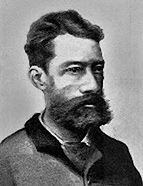

His reputation in the scientific community was based on his publications and the excavations at Briteiros and Sabroso, as well as three events. The first consisted of a conference and visit to Citânia , organised by Martins Sarmento and Albano Belino, which took place in 1877. Although some of the relevant figures did not respond positively to the invitation, the event had some impact, especially at national level. Another similar event took place on 8 October 1880, in the context of the 9th Session of the Congress of Prehistoric Anthropology and Archaeology, held in Lisbon, with the participants in this scientific meeting visiting the ruins of Citânia de Briteiros , guided by Sarmento (Lemos, “A excursão ao Norte de Portugal...” 1988). Considering that he was also chosen as one of the Portuguese speakers at this academic meeting, it can be concluded that, overall, this event was one of the most substantial contributions to his international reputation. Finally, in early August 1881, the Scientific Expedition to Serra da Estrela took place, promoted by the Lisbon Geographical Society. The archaeology section was the responsibility of its member no. 729, Martins Sarmento, who also wrote the corresponding report (“Ethnology — Os Celtas ...”, 1883). Given the prestige of this association, the choice of the archaeologist from Guimarães to take on this responsibility speaks volumes about the prestige he had acquired in this scientific field, which was then in its infancy.
Sarmento was always a man of “free thought”, who valued the originality of his ideas, which were not always easy to fit into the context of the major trends of his time. However, he demonstrated knowledge of the leading European researchers in the fields of archaeology, ethnology, linguistics and even physical anthropology. The latter field was considered fundamental to the characterisation of ancient populations, following the work of Broca, with whom he was very familiar. Although the influence of French culture in Europe at that time was particularly strong in Portugal, it is not only research from that country that is most reflected in his work. In linguistics, D’Arbois de Jubainville stands out, known especially for his studies of Celtic languages and ethnology (especially Les premiers habitants de l’Europe ), but there are also references to the Swiss Adolphe Pictet and the Germans Karl Brugmann and Otto Schrader in connection with their works on comparative linguistics, in addition to Humboldt. s questions of ancient ethnology, which are particularly important in his work, references to the works of Baron de Belloguet (Dominique-François-Louis Roget, with the suggestive title Ethnogénie gauloise , ou Mémoires critiques sur l’origine et la parenté des Cimmériens , des Cimbres , des Ombres, des Belges , des Ligures et des anciens Celtes ) and Dieffenbach (Celtica; Origines Europae ), but his references are very diverse, extending especially to Amédée Thierry (Histoire des Gaulois ), John Rhys (Celtic Britain), Henri-Guillaume Moke (La Belgique ancienne et ses origines gauloises , germaniques et franques ) and Adolf Holtzmann (Kelten und Germanen ), some of whom were probably included by Adolfo Coelho in his list of “writers of secondary importance” on whom the Vimaranense author bases his theories. In the field of archaeology, Alexandre Bertrand (from his extensive work, he draws particularly on a five-volume work published under the title Nos Origines ), Grabiel de Mortillet ( Musée Préhistorique ; Le Préhistorique ) and Émile Cartailhac (Les âges préhistoriques de l’Espagne et du Portugal) stand out. Despite this, Sarmento does not consider himself an academic and even cultivates some distance from the scientific community in general, with a few exceptions. As a rule, he places himself in the position of someone who wants the “wise men” to contribute some substantial knowledge that will resolve the main issues that torment him. For this reason, he has sometimes agreed to join the scholarly circle. But these rare occasions do not contradict the image of a scholar who embraces his “provincial” status because he truly feels himself to be the representative of an honest and honourable local culture, which constitutes a kind of counterpoint to the urban world, academicism and the circle of honours and corridors of power.
This work is financed by national funds through FCT - Foundation for Science and Technology, I.P, in the scope of the projects UIDB/04311/2020 and UIDP/04311/2020.
